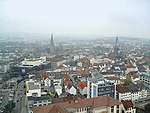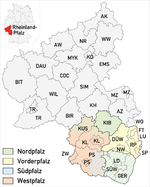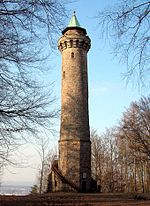Waldstadion am Erbsenberg
Football venues in GermanyGerman sports venue stubsRhineland-Palatinate building and structure stubsSports venues in Rhineland-Palatinate
Waldstadion am Erbsenberg is a football stadium located in Kaiserslautern, Germany. Its primary tenant is VfR Kaiserslautern. The stadium, which was built in 1938, was originally designed to hold 15,000 spectators, but is currently approved to hold only 5,000. The stadium hosted part of the German Monsters of Rock tour in 1983.
Excerpt from the Wikipedia article Waldstadion am Erbsenberg (License: CC BY-SA 3.0, Authors).Waldstadion am Erbsenberg
Erbsenberg, Kaiserslautern Betzenberg
Geographical coordinates (GPS) Address Nearby Places Show on map
Geographical coordinates (GPS)
| Latitude | Longitude |
|---|---|
| N 49.437222222222 ° | E 7.7849166666667 ° |
Address
Erbsenberg
67663 Kaiserslautern, Betzenberg
Rhineland-Palatinate, Germany
Open on Google Maps








